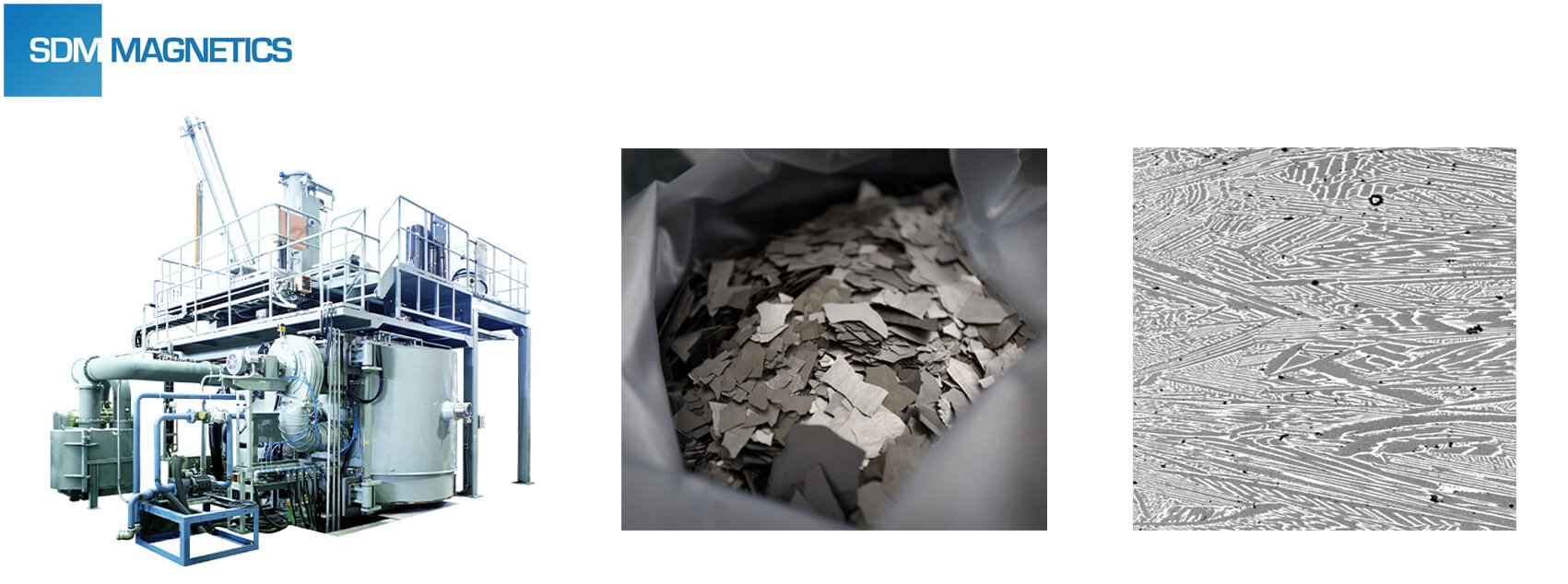Melting and strip casting is the follow-up process of raw material weighing. Melting is referred to the homogenization process that transforming different single metal into alloys. Sintered Neodymium magnet normally select pure metal or master alloy as raw material and heat material to molten state via medium and low frequency induction melting under a vacuum or inert gas protection environment. Casting can be processed when the alloy melt realized homogenization, exhaust, and slagging. Casting is referred to cast alloy melt into alloy ingot with certain shape, dimension, and microstructure. Melting and strip casting is crucial to composition, crystalline state, and distribution of phase, thus impact subsequent process and magnetic performance. A good cast ingot microstructure should possess well-grown and fine-sized columnar crystal, then Nd-rich phase should distribute along the grain boundary. In addition, cast ingot microstructure should be free of α-Fe phase. Re-Fe phase diagram indicate that rare earth ternary alloy is inevitable to produce α-Fe phase during slow cooling. Room temperature soft magnetic properties of α-Fe phase will seriously damage magnetic performance of magnet, thus must be inhibited by rapid cooling. In order to satisfy desired rapid cooling effect to inhibit the production of α-Fe phase, Showa Denko K. K., developed Strip Casting Technology and soon became routine technology within the industry. Uniform distribution of Nd-rich phase and the inhibitory effect on α-Fe phase can effectively reduce the total content of rare earth which favorable to manufacture high performance magnet and cost reduction.

